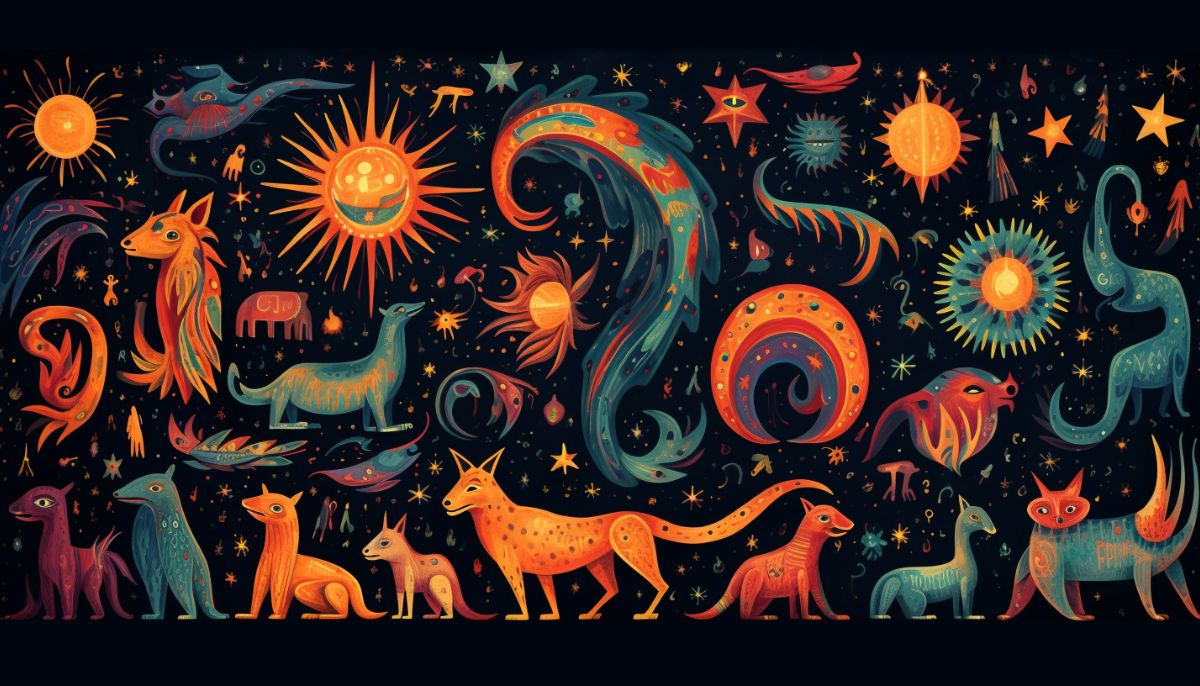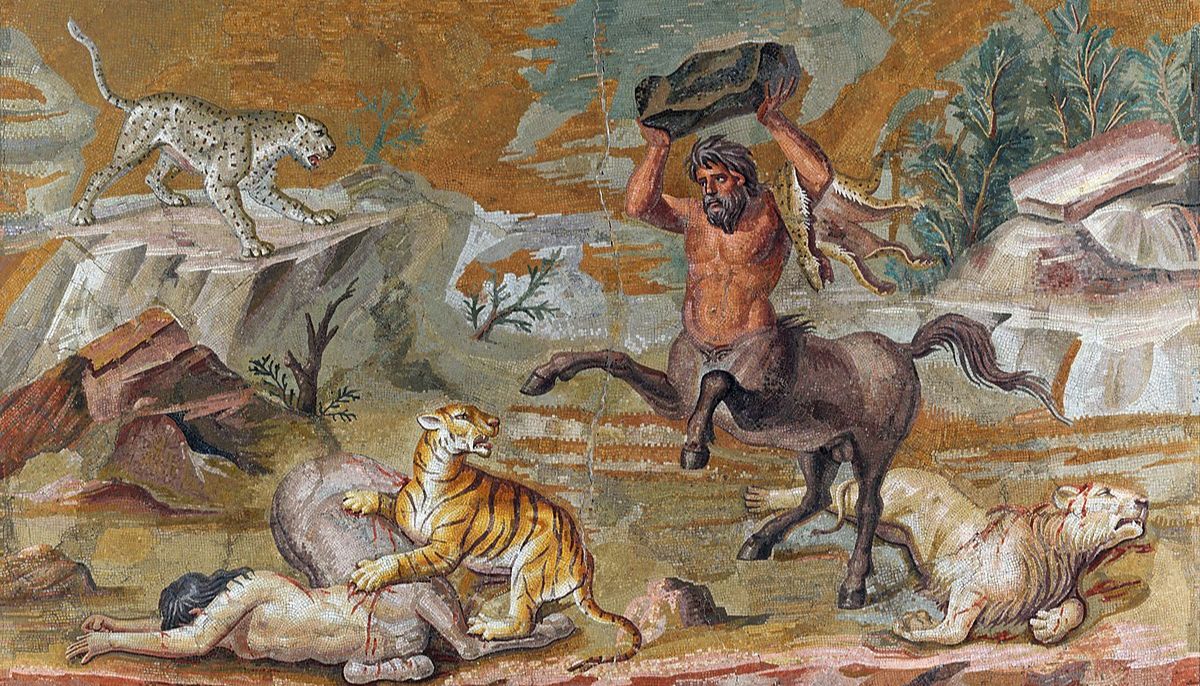Centaurs in the rich mosaic of Greek mythology, half-human, and half-horse beings take on distinct roles and characteristics depending on their region of origin.
The Thessalian and Arcadian centaurs, in particular, exhibit notable differences that shed light on their unique mythological significance.
Which Greek God created Centaurs?
The creation of centaurs finds its roots in a tale of divine deception and longing. According to ancient accounts, the centaurs were said to be the offspring of Ixion and Nephele, and their unique existence emerged from a complex web of divine machinations.
The story begins with Ixion, a mortal king known for his audacity and temerity. It was Ixion’s fateful encounter with Nephele, a cloud nymph bearing a striking resemblance to the goddess Hera, that set the wheels of destiny in motion.
Zeus, ever watchful over the affairs of mortals, devised a cunning plan. He fashioned Nephele into the likeness of his queen, Hera, and sent her to Ixion, seeking to test the king’s true intentions.
Beguiled by the illusion, Ixion succumbed to his desires and seduced the cloud nymph, believing her to be the goddess herself. This deception would have far-reaching consequences, ultimately leading to the birth of the centaurs.
The centaurs emerged from the union of Ixion and Nephele, creatures bearing the combined forms of human torsos and horse bodies. This lineage, born of divine intervention and mortal passions, imbued the centaurs with a complex nature that would define their existence in Greek mythology.
The Different types of Centaurs in Greek mythology
Diving deeper into Greek mythology, we encounter a fascinating array of centaur subtypes, each with distinct characteristics and roles. These diverse variations within centaur lore offer unique perspectives on their origins, behavior, and interactions with mortals and gods.
Thessalian Centaurs: Wild and Chaotic
The Thessalian centaurs, hailing from the region of Thessaly in ancient Greece, are perhaps the more well-known and infamous of the two groups.
They are often depicted as unruly and rowdy, symbolizing nature’s untamed and chaotic aspects. These centaurs frequently appear in myths and stories as disruptive forces, engaging in violent clashes and unruly behavior.
One of the most renowned tales involving Thessalian centaurs is the Lapiths’ battle against them during the wedding of Pirithous and Hippodamia, symbolizing the struggle to maintain order in the face of primal instincts.
Arcadian Centaurs: Peaceful and Civilized
In contrast, the Arcadian centaurs, originating from the region of Arcadia, exhibit a more peaceful and civilized demeanor. They are often portrayed as wise and gentle beings, living harmoniously with the natural world.
Arcadian centaurs are rarely associated with violence or chaos, unlike their Thessalian counterparts. Their more tranquil disposition aligns with Arcadia’s pastoral and idyllic landscape, emphasizing the peaceful coexistence of man and nature.
Famous Centaurs from Greek Mythology
Among their ranks, several centaurs have earned renown for their roles in various legendary tales. Here are some of the most famous centaurs in Greek myth:
1. Chiron: The Wise Healer
Chiron stands as the most revered centaur in Greek mythology. Unlike his unruly kin, Chiron was known for his wisdom, intelligence, and mastery of various disciplines, including medicine, music, and archery.
He became a revered mentor to Greek heroes, including Achilles, Jason, and Heracles. Chiron’s benevolent nature and immense knowledge endeared him to mortals and gods.
2. Pholus: The Hospitable Centaur
Pholus, known for his hospitality, played a significant role in the story of Heracles’ Fourth Labor – the retrieval of the Erymanthian Boar.
Pholus inadvertently triggered a chaotic event by uncorking a jar of wine, drawing the attention of other centaurs. In their frenzy, they attacked Heracles, leading to a fierce battle. Pholus met his end by a stray arrow poisoned with the Hydra’s venom.
3. Nessus: The Vengeful Centaur
Nessus is best known for his fateful encounter with Heracles. As Heracles and his wife Deianira attempted to cross the river Euenos, Nessus offered to carry Deianira across.
However, once on the other side, Nessus attempted to assault her. Heracles, witnessing the assault, shot Nessus with one of his poisoned arrows.
Before his death, Nessus tricked Deianira into keeping some of his blood, which later played a tragic role in Heracles’ demise.
4. Eurytion: The Aggressor
Eurytion was a centaur known for his aggressive and unruly behavior. His notoriety stemmed from his attempt to marry off his daughter, Hippodamia, leading to the disastrous Centauromachy – a violent clash between centaurs and Lapiths at a wedding feast.
Eurytion’s impulsive actions were a catalyst for this infamous event.
5. Centaurus: The Progenitor
Centaurus, as the son of Ixion, was the mythical progenitor of the centaur race. He inherited his father’s complex nature, as Ixion was a mortal king punished for his treacherous deeds.
Centaurus’s unique status as the original centaur figure makes him an important figure in centaur lore.
Centaur Symbolism and Interpretation
Due to their prominent appearances in Greek mythology, the Thessalian centaurs are more widely recognized and frequently referenced in ancient texts. Their interactions with heroes and gods significantly shaped the narratives of Greek epics and tragedies.
The Arcadian centaurs, while less prevalent in the broader scope of Greek mythology, hold a unique place in the cultural heritage of the Arcadian region. They are often associated with the untamed wilderness and are considered emblematic of the rugged landscapes of Arcadia.
These distinctions between Thessalian and Arcadian centaurs showcase the multifaceted nature of Greek mythology, where regional variations and interpretations give rise to a rich tapestry of stories and symbolism.
Whether wild and chaotic or peaceful and civilized, centaurs continue to captivate the imagination as complex beings that embody the intricate relationship between humanity and the natural world.
Want to know more about the creatures and monsters of Greek Mythology?

Explore more articles like this in our broader series on Greek monsters. To delve even deeper into the world of mythical creatures, be sure to check out our comprehensive hub article on the monsters of Greek mythology.






